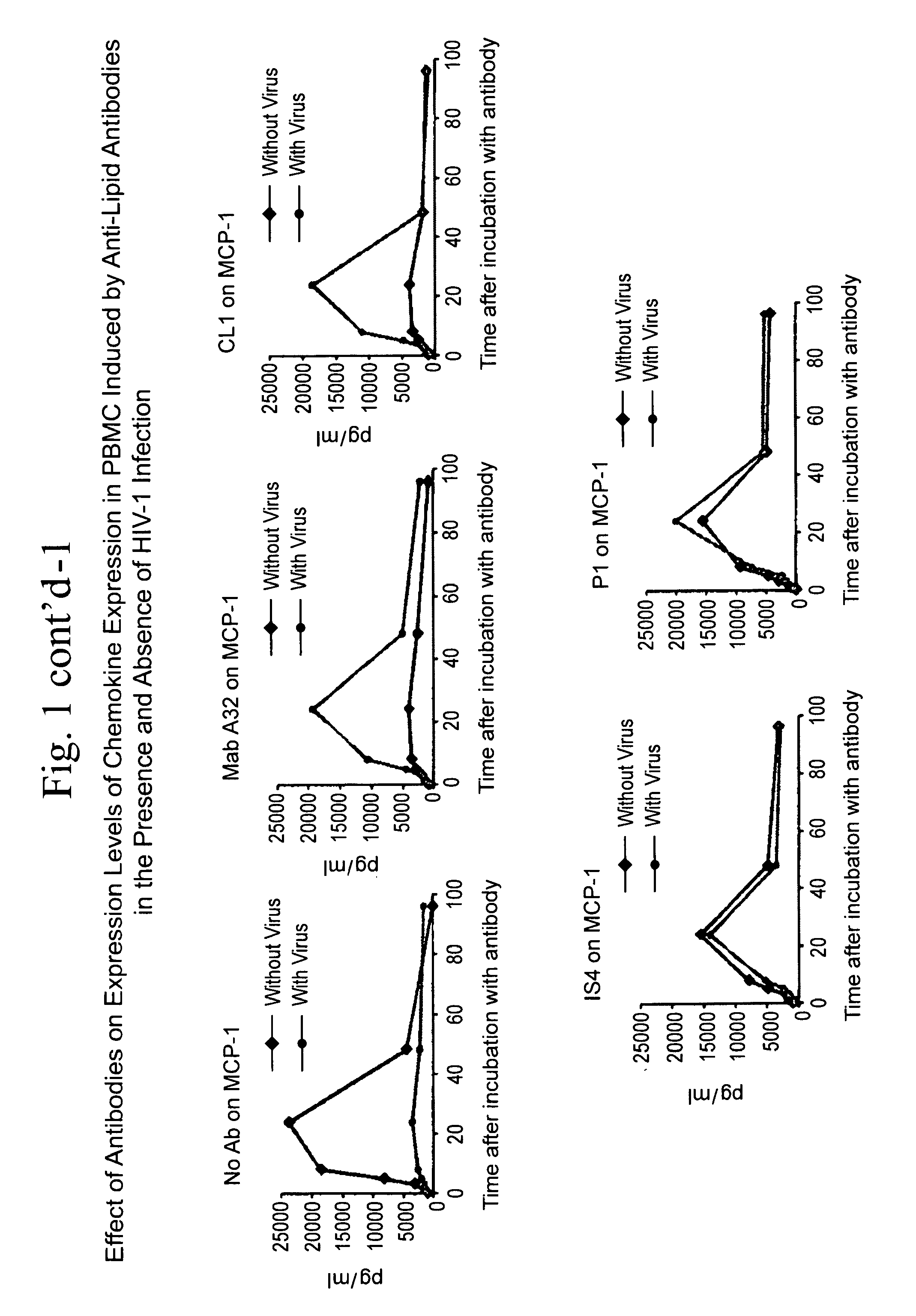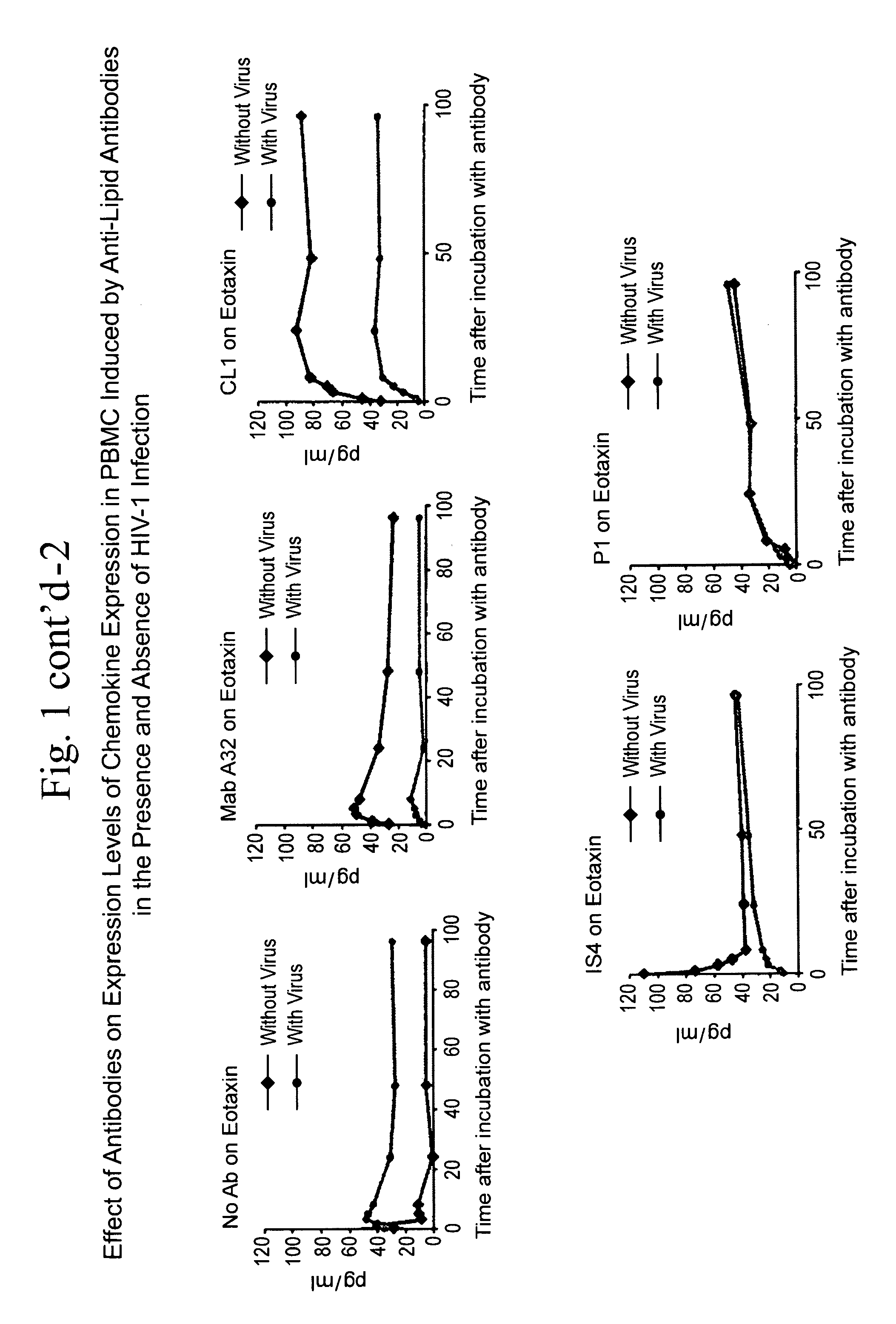Method of inducing an Anti-viral immune response
a technology of immune response and antiviral antibody, which is applied in the direction of antibody medical ingredients, drug compositions, immunological disorders, etc., can solve the problems of inability to prime pathogens or vaccines for an accelerated or enhanced response, inability to induce adaptive immune responses within days to weeks, etc., to achieve rapid antiviral immune response and inhibit viral infection
- Summary
- Abstract
- Description
- Claims
- Application Information
AI Technical Summary
Benefits of technology
Problems solved by technology
Method used
Image
Examples
example 1
[0036]It has been postulated previously that the reason that subjects with autoimmune disease have a lower incidence of HIV-1 infection is related to tolerance defects in autoimmune disease subjects. It has been further postulated that these defects can lead to the production of certain types of antibodies that are capable of preventing infection of human cells by HIV-1 (Haynes et al, Human Antibodies 14:59-67 (2005), Haynes et al, Science 308:1906 (2005)). During the study of anti-lipid antibodies derived from humans with autoimmune disease, such as systemic lupus erythematosus (mAb CL1) and anti-phospholipid syndrome (P1 and IS4), it has been found that these antibodies prevent HIV-1 infection in a human peripheral blood mononuclear cell (PBMC) assay (Bures et al, AIDS Res. Hum. Retroviruses 16:2019-2035 (2000), Montefiori et al, J. Virol. 72:1886-1893 (1998), Montefiori et al, J. Infect. Dis. 173:60-67 (1996)) (Table 1) but not in the CD4-, CCR5 and CXCR4-transfected epithelial c...
example 2
[0044]Sequence alignment of wild-type CD40 of human (hCD40), mouse (mCD40) and rhesus monkey (RhCD40) and rhesus monkey CD40 as well as mouse CD40 and rhesus monkey mutant CD40 is shown in FIG. 5. Amino acids of human CD40 interfacing with CD40 ligand are bolded and underlined. A mutant mCD40, mCD40mutEK, was designed, in which amino acid (K114) at the corresponding interface of mouse CD40 was mutated to E as the same for human CD40 to avoid inducing antibodies that might interfere with the interaction of CD40 and CD40 Ligand. In the spanning region (indicated with a box) of the interface of CD40 with CD40 Ligand (from amino acid position 83 to 117), there are 2 amino acids (amino acids at positions 109 and 112) in the region that are different between rhesus monkey and human CD40 proteins, and there are substantial differences in sequences between mouse and human CD40. To minimize the potential for induction of antibodies that might interfere with the interaction of CD40 and CD40 L...
example 3
[0045]The ability of antibodies against CCR5 chemokines to inhibit the capacity of anti-lipid antibodies to inhibit HIV-1 infection of PBMC was studied. The question presented was whether antibodies that neutralize the effects of CCR5 chemokines, when added to a PBMC HIV-1 infectivity assay, could inhibit the ability of mAb CL1 to inhibit PBMC infection by HIV-1 (FIG. 6). It was found that antibodies that neutralize the CCR5 chemokines MIP-1α and MIP-1β were the strongest inhibitors of the ability of the anti-lipid antibodies to inhibit HIV infectivity. Thus, indeed, the induction of CCR5 chemokines in the presence of HIV-1 by anti-lipid antibodies can inhibit HIV-1 infection of PBMC.
[0046]All documents and other information sources cited above are hereby incorporated in their entirety by reference.
TABLE 1HIV-1 inhibition activity anti-lipidand HIV-1 MAbs assayed in PBMC.IC80 vs primary isolates (μg / mL)mAbB.6535C.DU123IS40.070.06CL10.420.19P130B1>50>50B2>50>50Tri-Mab2.4>25Tri-Mab = ...
PUM
| Property | Measurement | Unit |
|---|---|---|
| Density | aaaaa | aaaaa |
| Density | aaaaa | aaaaa |
| Density | aaaaa | aaaaa |
Abstract
Description
Claims
Application Information
 Login to View More
Login to View More - R&D
- Intellectual Property
- Life Sciences
- Materials
- Tech Scout
- Unparalleled Data Quality
- Higher Quality Content
- 60% Fewer Hallucinations
Browse by: Latest US Patents, China's latest patents, Technical Efficacy Thesaurus, Application Domain, Technology Topic, Popular Technical Reports.
© 2025 PatSnap. All rights reserved.Legal|Privacy policy|Modern Slavery Act Transparency Statement|Sitemap|About US| Contact US: help@patsnap.com



